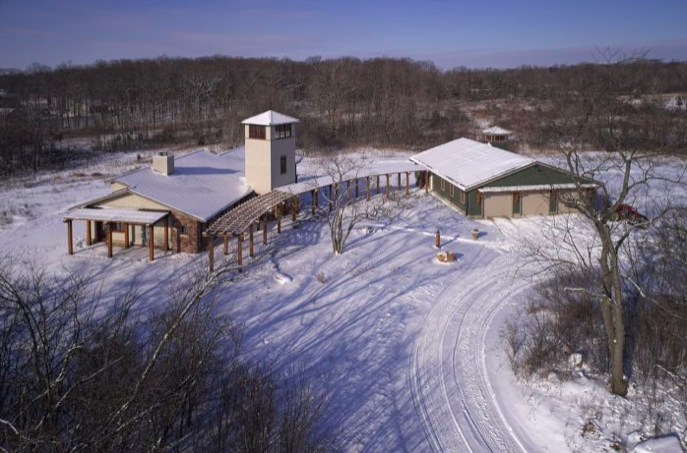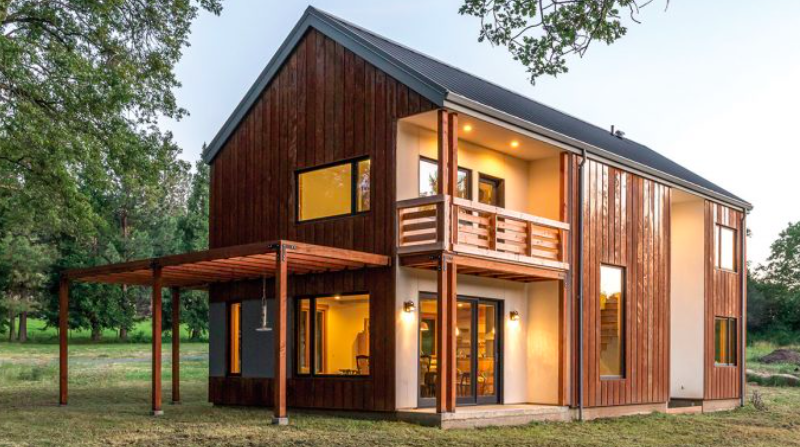
This episode of the BS* + Beer show is the presentation that Michael Maines and Robert Swinburne gave at the 2020 Fine Homebuilding Summit: “Designing a High-Performance House With the Pretty Good House Approach.” Conventional construction is complicated enough; when you build high-performance homes, mistakes can be disastrous, as these projects often include unfamiliar components and assemblies, and low heating loads provide little energy for drying. Residential designer Michael Maines shows how he uses the Pretty Good House approach to think through every detail so there are no surprises once construction starts. Architect Robert Swinburne will share a project he designed that exemplifies Pretty Good House principles. Warning: if you enjoy the excitement of figuring things out on the fly and putting out fires when problems occur, you may find that running well-planned projects is boring in comparison.
Enjoy the show!
Join us on Thursday, January 7, from 6 to 7:30 p.m. EST when the team behind Burh Becc at Beacon Springs Farm, the world’s second Living Building Challenge−certified home, gives us an in-depth look at the complex project. A study in regenerative design, Burh Becc was built with multiple generations and future iterations in mind. It took 3-1/2 years to design, 18 months to build, and a year of performance auditing before earning LBC certification. We will hear about what that certification entails and the ways in which the team innovated to meet its stringent requirements.
Speaker bios
Michael Klement is the principal of Architectural Resource, LLC a full-service, award-winning, architectural design firm specializing exclusively in fine residential design of new homes, cottages, additions, remodels, and renovations with an emphasis on smart, sustainable design. Their expertise ranges from historically sensitive, to hyper-contemporary, to deep Green, to Net Zero Energy and everything in between. They are responsible for Michigan’s first LEED Platinum whole-house remodel, her first PHIUS+2015 Pre-Certified Passive House, as well as the world’s second fully certified Living Building Challenge residence. Since the firm’s inception in 1991, creating beautiful, healthy, energy-efficient homes has been a fundamental aspect of their core mission.
Amanda Webb is a registered architect and sustainability consultant. She has built her career around building and development practices that save resources, reduce operations costs, and increase occupant well-being that result in healthy internal environments and the preservation of external environments. These practices extend far beyond design and lead to deep collaboration with clients and stakeholders to set firm and strategic goals, meeting those goals, and exceeding expectations. Her commitment is to ensure successful project delivery, to drive key strategic initiatives and operational efficiencies, and to provide guidance and leadership to team members across all disciplines.
Bob Burnside founded Fireside Home Construction in 1996 and has been building custom homes and doing remodeling work ever since. Bob holds a Bachelor of Science degree in marketing from Indiana University, as well as an MBA from the University of Phoenix. Green building has been a forte of the company since day one, and they are proud to have been named one of the top three builders in the country by Custom Home magazine. They built the first LEED Platinum house in Michigan and were involved in the certification of the world’s second Living Building Challenge residential project.
Weekly Newsletter
Get building science and energy efficiency advice, plus special offers, in your inbox.















8 Comments
This was a really helpful and compact presentation, thanks! If nothing else, the takeaway of "build smaller" seems like a really great way for anyone to think about any project they approach.
One thing I'd love to see (not to make demands of a volunteer-run project, but...) is a cost breakdown of a project that is PGH-sized, and how estimates would vary for code minimum vs. PGH vs. PHIUS- (or PHI-) level build. The discussion of diminishing returns makes a ton of sense to me in the abstract, but I have a really hard time grasping how much a PGH vs. PH build costs. I know there are lots of variables, PGH isn't a standard, etc. - but anyway, that would be something I'd love to see a case study of (perhaps here on GBA and/or on the Economics page of the PGH site?).
By the way, Ecocor/Solsken has what seems like the beginnings of this with their recently-introduced Optima (not sure if this would check all the PGH boxes, but maybe?) and Passiv shell options: https://ecocor.us/portfolio/rhodi/
Thanks! "Compact" is a nice word for rushing through a 40-minute presentation in 30 minutes ;-) Building smaller, and renovating when possible, are two great ways to reduce environmental impact.
I like your idea, and it wouldn't be hard--I shared images of the energy model summary I do for projects, which already includes code minimum and PGH-level details, and sometimes Passive House-level details. I know that others do similar with different programs. Generally I say that a PGH is typically just a few percentage points more expensive than a code-minimum house; the whole idea is to balance expenditures and gains. But that still leaves room for interpretation.
Good point about Ecocor/Solsken. Their new Optima line could definitely be called their "PGH" line. We're hoping to work with them on a new house this summer.
That all makes sense, thanks. I found it really interesting how large the price gap is at Ecocor between those two levels... a lot more than I would have guessed! Curious to see how your project with them progresses, if you end up sharing any of that here - I recall you mentioning your former experience there, so I'm sure it it'll be a fun one for you.
Haha, yeah it's a bit like, "the prodigal son returns," if Ecocor founder Chris and I weren't about the same age. Prodigal brother, perhaps. We will probably price it out with both Ecocor systems once we have a design, and we'll compare the up-front costs to operating costs and other factors.
I think the cost difference between PGH and PH varies tremendously, so it would be hard to pin that down, and that's actually part of the point of PGH. PH is inflexible, and if you come up short of the standard, you start having buy exotic expensive materials, or get the one-and-only contractor who knows how to work with a particular technology to help out, so costs suddenly go way up. Whereas in PGH, you go as far as you can without incurring that kind of expense (and environmental cost, if the expensive materials are shipped from far away and the contractor is driving to the site every day from a hundred miles away). Sometimes, following PGH gets you to PH levels without ever hitting the point of unreasonable expenses, and then the costs are the same.
Charlie, that's a good way to think about it. In fact, in our presentation I think Bob mentioned that his project, the Sugar Bush House, is in the process of becoming a certified Passive House. The costs made sense on that project, and with the other elements it's also a Pretty Good House. One advantage of using building envelope systems that don't include foam is that adding a few more inches of insulation often doesn't greatly affect the price.
Helpful points by both of you, thanks. I think it's a bit of a challenge for those of us not in the building industry (or at least for me) to conceptualize these details - like when is the cost of PH >> PGH vs. when would it be a small difference (Sugar Bush), why would it make sense in one project vs. another to try to reach PH levels, when do you reach "good enough," etc. It feels a bit like a Venn diagram between code, PGH, and PH - and the amount of overlap depends on the situation.
This is all becoming clearer the more I read/watch/learn, so thanks for that!
It's not just you--this morning I talked with clients about exactly that. The nice thing about code minimum is that it's pretty clear--you either reach it or you don't. The same is true for Passive House; the difference is that it's fairly challenging to reach, especially if you don't have experience with PH, and it has narrow goals--mainly energy, IAQ and comfort. PGH is broad in scope and light on requirements. We have prescriptive guidelines for things like R-values and airtightness, but energy modeling can show that those values are either higher or lower than where the true balance of expenditures vs gains lies.
Log in or create an account to post a comment.
Sign up Log in